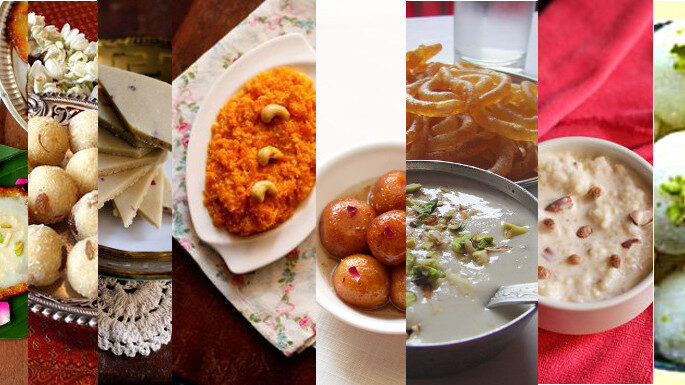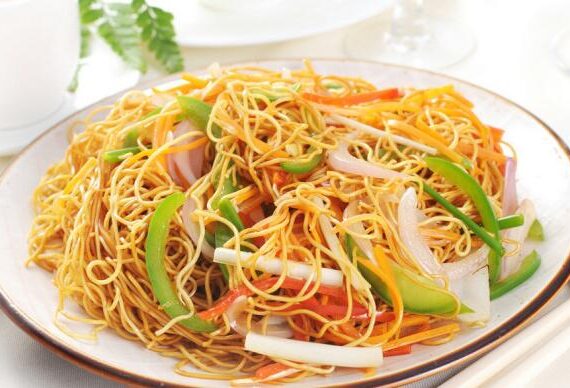An authentic Indian meal is actually incomplete without a sweet dish or dessert... Sweet dishes have been a tradition to be served at the beginning of every meal. It is believed that it practice aids bin digestion. These dessert that are so deeply rooted to the Indian culture are actually not Indian. Indian dessert that are not so Indian.…!!!!
Yes… In ancient time, trades from different places like Arab countries or Middle East navigated to Indian & brought these with them. Since the Middle East was a high sugarcane yielding region, it naturally turned into a mecca for desserts. Also you must know that even Idli doesn’t owe its provenance to South India and the Samosa trail too leads us to Middle East. This list contain some of the best Non-Indian sweets and desserts which will take you to the mouth-watering desserts.
Sweet dish, mithai or meetha, is how we Indians refers the Dessert, a significant element in Indian cuisine. There is no denying the fact, that desserts give a befitting end to any meal. Indians are known for their unique taste due to the experimental behaviour when it comes to food.
Here you will get to know about some popular Indian Desserts that are not Indian. Now take a look at the below list…
GULAB JAMUN
The most popular Indian dessert along with Laddus are the Gulab Jamun, you will surely get in every birthday eves, festival and even in marriage functions. But do you know, roots of this dessert is in Persia and the name itself is derived from the Persian language- where the word ‘GUL’ means flower & ‘AB‘ means water while Jamun owes its origin to the fruit by the same name. The Persian version of this dessert is called as ‘LUQMAT AL QADI’. These sweet dumplings are made out of flour, milk powder, saffron & cardamom which are deep fried and soaked in rose-water scented sugar syrup. Some of the different names for Gulab Jamun in India are Ledikeni, Pantua, Katangi or Lal Mohan.

JALEBI
A batter made out of flour , yeast , yoghurt, deep fried in circular shape & further soaked in honey or sugar syrup than served with curd or rabri is a very common breakfast thing is north India particularly but interestingly, it has its root in MIDDLE EAST where it is called ‘ZALIBIYA’ in PERSIA , ‘ZALABIYA’ in Arabic & ‘ZLEBIA’ in ‘MAGHREBI ARABIC’. In Iran, the sweet is known as ‘Zoolabiya’ and prepared especially during the Ramzam. You may also have enjoyed this sweet spirals of Jabebi are on almost every wedding caterer’s menu list. Some more names of Jalebi in other countries are Jeri in Nepal, Zlabia in Algeria, Libiya and Tunisia. (Source: Su-Lin/Flickr)

FALOODA
This cold dessert is made out of milk, sweet basil seeds, vermicelli, rose syrup, peace of jelly topped with ice cream. It is the popular summer treat all across the country but this particular dessert also has it’s roots in Persia, where it is called as Faloodeh. It was brought by Persian Muslim merchants in 16th and 18th century and later was a part of Mughal Empire’s royal menu. The varied drink of this dessert in different countries are Bandung in Malaysia and Singapore, Nak Manglak in Thailand, Kurds in Iraq, Bubble Tea in Eastern Asia and Alouda in Mauritius. (Source: food.ndtv.com)

SHAHI TUKDA
In India, Shahi Tukda is most popular dessert in Awadhi and Hyderabadi cuisine and is compulsorily served in gatherings and weddings. A bread pudding made by fried bread slices soaked in hot milk flavored with saffron and cardamom and best served when cold. This famous sweet has its roots in Egypt and it is particularly prepared during the time of Ramadan an Eid.

KALAKAND or QALAKAND

This dessert has its origin in Arab cuisine, ‘qand’ in Arabic means sweet. Kalakand is hugely popular in North, South and East India and prepared during festivals like Holi, Eid, Navratri, and Diwali. The fried western version of kalakand is known as ‘Ajmeri Kalakand’ and is made with lots of fresh figs, to taste absolutely divine. This is delectable fudge made with sweetened and solidified milk and paneer. It is also the simple and an amazing sweet to be made during festivals and get together. Some of the other alternative names for kalakand are milk cake, qalaqand, and Mishri-mawa.
FIRNI or PHIRNI

This dessert is a mandatory dish during festivals like Ramadan, Eidul-Adha, and Eidul-Fitr. This sweet dish is a famous milky desert usually served cold. It is a pudding made with milk, sugar, ground rice and flavoured with rose water, saffron and cardamom. For garnishing almonds, cashew nuts or pistachios are used. This famous sweet originated in the Middle East or the ancient Persia and is known to have introduced by Moghuls to Indians also known as firni in Afghanistan, Iran, and Azerbaijan. The other alternative Indian names for ‘Firni’ are Kheer, Ksheeram, Fereni, Payesh etc.
HALAWA

This luscious dessert has its root in the Middle East and is prepared by different ingredients like flour or semolina, ghee or butter, sugar, dry fruits, etc. It is known as Halawa in Arabic and it means ‘sweetness’. Halwa can also be made out with veggies like carrot, pumpkin, beetroot, etc. The other famous versions in different countries include nut based halwa in eastern Arab countries like Romania, Greece, Egypt, Sesame Halwa in Poland and the areas around Mediterranean sea, Sunflower Halwa in Eastern Europe, Russia, Ukraine, Floss Halwa in Kocaeli, Turkey.
SEVIYAN

It is a popular dessert made out of thin pasta or vermicelli fried in ghee and cooked in milk and spices. There is a varied version of Semiya also known as Seviyan. Vermicelli has its roots in the Middle East, it is called as She’reya in Arabic. The vermicelli is fried until brown in butter or oil and then cooked with water and rice. In Somalia, vermicelli is used to make a similar kind of Indian kheer called Cadriyad. However, they do not add cream or milk and eat it as a dessert or as a side-dish with spiced rice. In the Southern parts of India, Semiya is also called as Payasam or Kheer and prepared using semolina, rice or barley. (Source: TheRoyal)
ALSO READ : What to eat now in hot Summer? | 5 Essential Foods and Drinks of Summer Diet
KULFI

This name originates from the Persian word ‘Qulfi‘, meaning a covered cup which is made with dense evaporated milk, nuts, saffron and cardamom, may have referred to the traditional kulfi mould. Also Kulfi was a royal favorite in the court of Akbar. (Source: InsatiableMunch/Flickr)
Sources : Wikipedia, YouTube, TheIndianEXPRESS, TheRoyal and other Internet sources.






Krishna Murari
????
Prerna Mishra
???
Mannat Srivastava
Woahh??
Shrashti Mishra
??
Riya Shukla
???
Krishna Murari Mishra
So sweet.
Good information, some of them I was knowing earlier, ultimately a good knowledge about origin of these sweets.